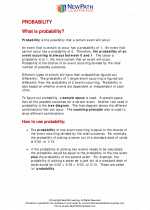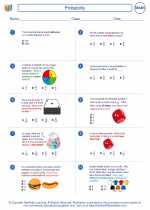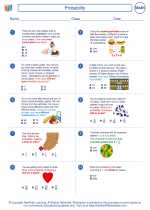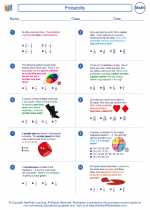Approximate Value
Approximate value refers to finding a number that is close to the actual or exact value of a quantity. It is often used when the exact value is difficult to determine or when a quick estimation is needed.
Ways to Find Approximate Value
There are several methods to find approximate values:
- Rounding: Rounding a number to the nearest whole number, tenth, hundredth, etc. For example, rounding 3.78 to the nearest tenth gives us 3.8.
- Estimation: Using known values or benchmarks to make an educated guess. For example, estimating the cost of 7 items at $8 each as approximately $56.
- Significant Figures: Identifying the number of significant figures in a value and using them to express the approximate value. For example, 345 has three significant figures, so an approximate value could be 350.
Importance of Approximate Value
Approximate value is important in real-world situations where exact values may not be necessary or feasible to calculate. It is commonly used in everyday activities such as shopping, cooking, and time management.
Study Guide
To master the concept of approximate value, it is important to practice the following:
- Practice rounding numbers to different place values.
- Apply estimation techniques to solve word problems.
- Understand the significance of significant figures in scientific measurements.
- Engage in real-life scenarios where approximate value is used, such as budgeting and measuring.
By mastering the concept of approximate value, one can become proficient in making quick and accurate estimations in various mathematical and real-world situations.
.◂Math Worksheets and Study Guides Sixth Grade. Probability
Study Guide Probability
Probability  Worksheet/Answer key
Worksheet/Answer key Probability
Probability  Worksheet/Answer key
Worksheet/Answer key Probability
Probability  Worksheet/Answer key
Worksheet/Answer key Probability
Probability 

 Worksheet/Answer key
Worksheet/Answer key
 Worksheet/Answer key
Worksheet/Answer key
 Worksheet/Answer key
Worksheet/Answer key

The resources above cover the following skills:
Statistics and Probability (SP)
Develop understanding of statistical variability.
Recognize a statistical question as one that anticipates variability in the data related to the question and accounts for it in the answers. For example, “How old am I?” is not a statistical question, but “How old are the students in my school?” is a statistical question because one anticipates variability in students’ ages.
Ability to introduce and develop statistical reasoning.